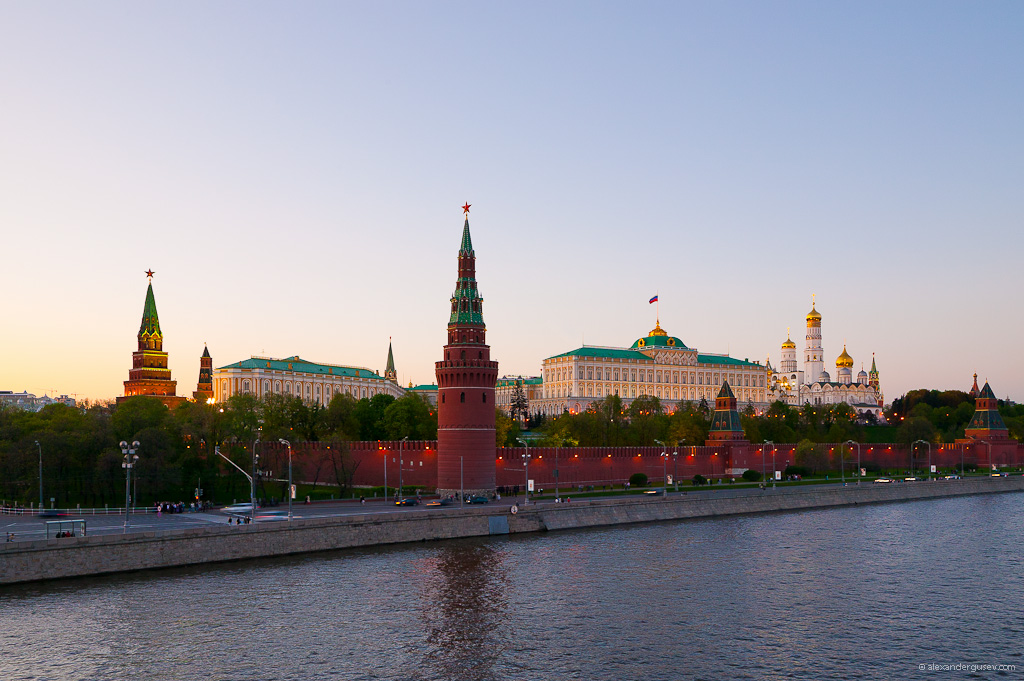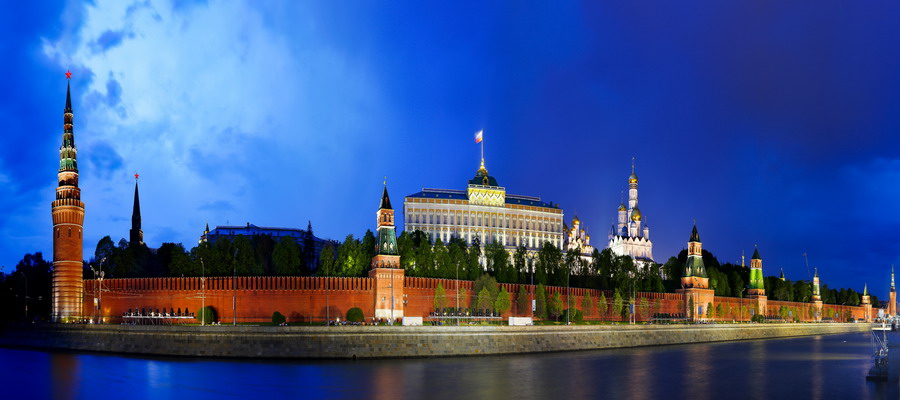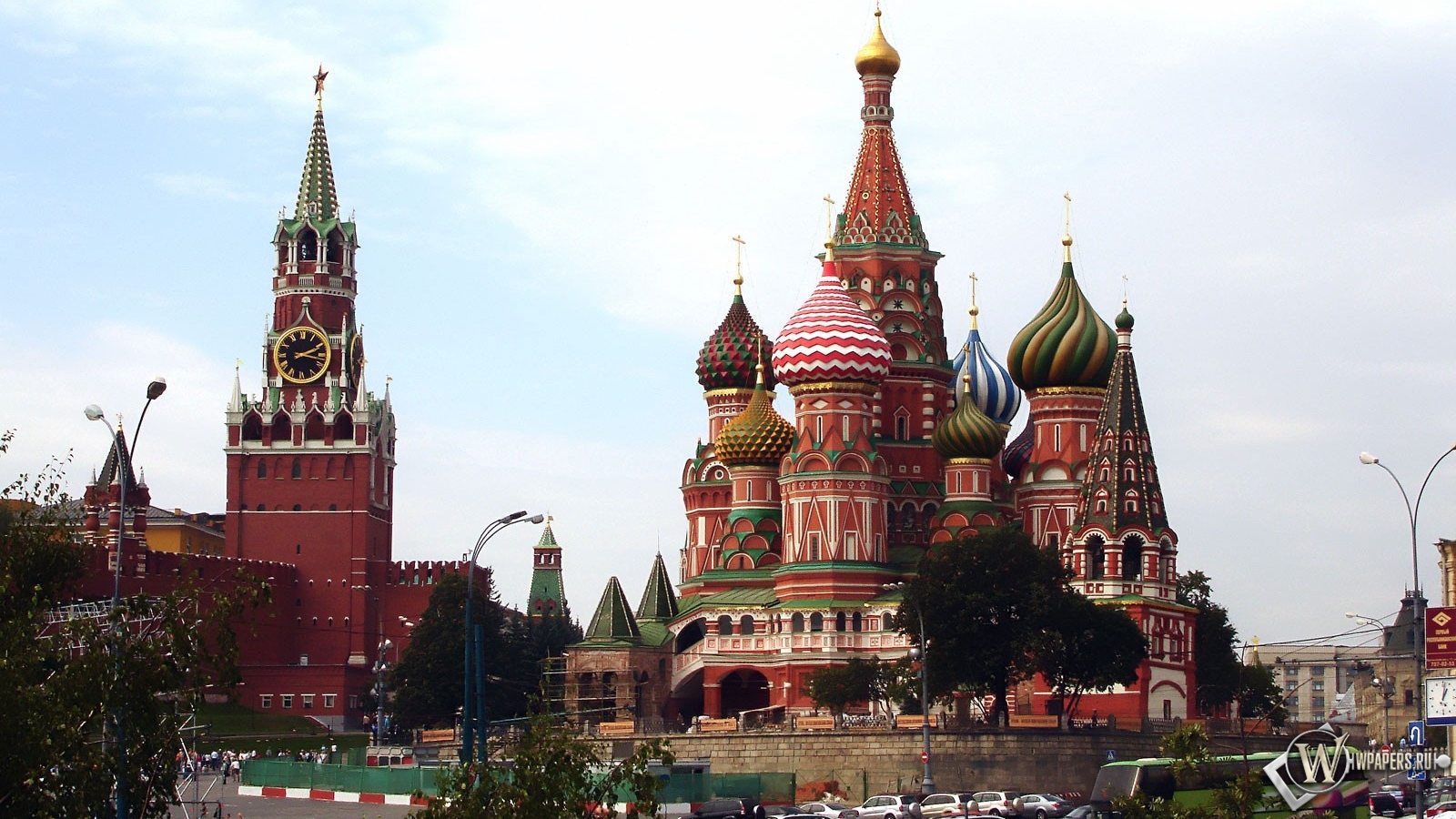The Moscow Kremlin, one of the world’s most ancient and beautiful architectural ensembles, soars above the left bank of the Moskva River.
Prince Yury Dolgoruky erected a wooden fortress on Borovitsky Hill in the 12th century. White stone walls along the perimeter and majestic churches within were built in the 14th century under Grand Prince Dmitry Donskoi. Italian architects invited by Grand Prince Ivan III built red brick towers and walls in the 15th century.
Major ceremonies took place in Cathedral Square and in the Cathedral of the Dormition (1475-1479). The Cathedral of the Dormition astounds with its majestic and vast interior. The Cathedral of the Archangel housing the tombs of Russian grand princes and tsars was built around the same time as the Cathedral of the Dormition. The Cathedral of the Annunciation is the face of the royal palace turned to the square where celebrations and feasts took place. The Palace of Facets served as the palace’s main banquet reception hall. North of the Palace of Facets is the Golden Palace, tsarinas’ banqueting hall. Above it are four palace churches covered by one roof and topped by eleven onion domes. Moscow’s oldest building, the Church of the Virgin’s Nativity built in the 1390’s, is deep within the Great Kremlin Palace ensemble.
The Church of the Deposition of the Virgin’s Robe (1488) and the Cathedral of the Twelve Apostles (17th century) are on the northern side of the Cathedral Square. The Cathedral Square ensemble is completed by a complex of bell towers on the eastern side. The Ivan the Great Bell Tower remained Moscow’s tallest structures for a long time.
The Tsar Pushka and the Tsar Kolokol are two grandiose monuments of 16th and 18th century Russian founding. The Tsar Pushka weighs almost 40 tons and the Tsar Kolokol with a base diameter of 6.6 metres, 202 tons.
The Kremlin Armoury and the Diamond Fund true treasuries of Russian art. The Armoury houses old weapons and tsar regalia, such as famed Monomakh’s Cap, the sceptre and orb, the tsars’ thrones, coronation vestments, ambassadorial gifts, gold and silver articles, etc. The Diamond Fund stores a collection of precious stones and jewels that belonged to the royal family, the crown, the sceptre and orb and the unique Orloff and Shah diamonds.
Each of the Kremlin’s 20 towers has its own unique appearance. The Kremlin Clock appeared on the Spasskaya Tower in 1491. The tunes the clock has played for centuries have changed several times. The clock has chimed the national anthem of Russia at noon and midnight since 1996. The Moscow Kremlin is a great creation of Russian culture, architecture and art, Russia’s greatest historic monument where the Middle Ages meet the Renaissance, the East meets the West and heaven meets earth.












